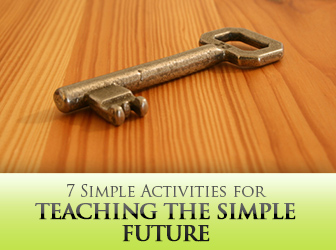7 Simple Activities for Teaching the Future Perfect



Whether your students are planners or prefer to fly by the seat of their pants, writing a five year plan can be beneficial in many ways. Explain the concept to your class and then give them time to think about where they will be in five years and how they will get there. Finally, have your students share their plans with the class.
Brainstorm with your class situations in which making a decision might be difficult. Then, have students choose one situation and write a paragraph detailing how they will handle the situation.
If your students are studying English in a country they don’t call home, it may be quite a long time till they are able to return to their friends and families. Have each person in your class list at least ten things they will do when they finally return to their home country.
Your students are studying English for a reason. Have pairs of students ask their partners what they will do once they are fluent in English. Then, have each person share his partners answer with the rest of the class.
Have your students ever been camping? Have groups of four or five brainstorm what they will need to prepare for a camping trip. Then have students discuss what role they will play in preparation for the trip using the simple future. For example, one person might say, ‘I will collect the fire wood’.
If your class comes from all around the world, have each person plan a trip to a city in his home country for the whole class. Each person should take three to five minutes to share with the class what they will do on the trip.
You can use simple fairytales to help your students practice using the simple future. Tell them a traditional story (try Jack and the Bean Stalk, Goldilocks and the Three Bears or The Three Little Pigs) but stop before the resolution to the problem. Have your students predict what will happen at the end of the story. You can also use this technique with any literature you may be reading in class.